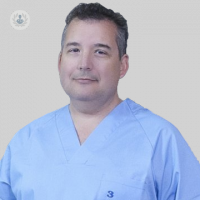¿Por qué me duele la cicatriz?
Written by:Scars are produced as part of the normal physiological response of the organism to an alteration of the integrity of any of the tissues that compose it. Composite of connective tissue (fibrous and dense), scar tissue forms after an injury or surgery.

The degree of healing can be determined by the size, depth and location of the wound, as well as by the age of the patient, inheritance, characteristics and pigmentation of the skin. Scar tissue may appear to cause pain, but it is not the scar tissue itself that results in pain.
Scar tissue has no nerve endings. What produces pain is the immobilization and attachment of the fibrous adhesions to a nerve root.
After some interventions, such as inguinal hernia, lung, heart, kidney and shoulder operations, as well as breast amputations, scar tissue pain is more common.
symptom
Patients with scar tissue tend to complain of neuropathic pain, during which there is continuous pain alternating with spontaneous attacks of sharp pain in the area of the scar. This pain can sometimes occur after a period of complaints that lasts a few months after surgery.
Diagnosis
During the examination, squeezing a small part of the scar can be very painful. On the other hand, there may be more pain than expected with the normal pain stimulus, such as by pricking a needle in the area of the scar. Touching the skin lightly around the scar can also be experienced as painful.
Treatment
It is based on a multidisciplinary treatment. Depending on the cause of your pain, your pain specialist will decide whether or not to embark on a physical treatment.
- Non-physical treatments- Psychological treatment- Rehabilitation
- Physical Treatments
- Medication- Oral medication for neuropathic pain: pregabalin, gabapentin, duloxetine, amitriptyline, tapentadol, oxycodone, tramadol.- Topical medication: capsaicin cream, 8% capsaicin patch, 5% lidocaine dressing, iontophoresis.
- Other treatments- TENS (Transcutaneous Neurostimulation)
- Interventional Pain Treatments- Local infiltration of the scar with anesthetics and corticosteroids.- Radiofrequency pulsed on the scar.- Radiofrequency pulsed on the nerve root.
Prevention
Although the literature on healing is very extensive, very little is known about the mechanisms that regulate these processes, particularly those related to the development of pathological scars. In recent years, the concept of healing prevails as a balance between the cellular activity involved in the formation of scars, and tissue remodeling.
The study of the molecular mechanisms responsible for abnormal scarring begins to offer new therapeutic strategies that improve the functional and aesthetic results of the affected tissues. At present, therapies aimed at reversing the molecular mechanisms of scar production, not yet commercially available, are being studied.
Therefore, the current treatments are empirical in nature and unpredictable, often doubtful. The existence of multiple treatments reveals the varied presentation of this entity that depends on multiple factors such as age, sex, race, location, and size of the scar and genetic predisposition, among others.



